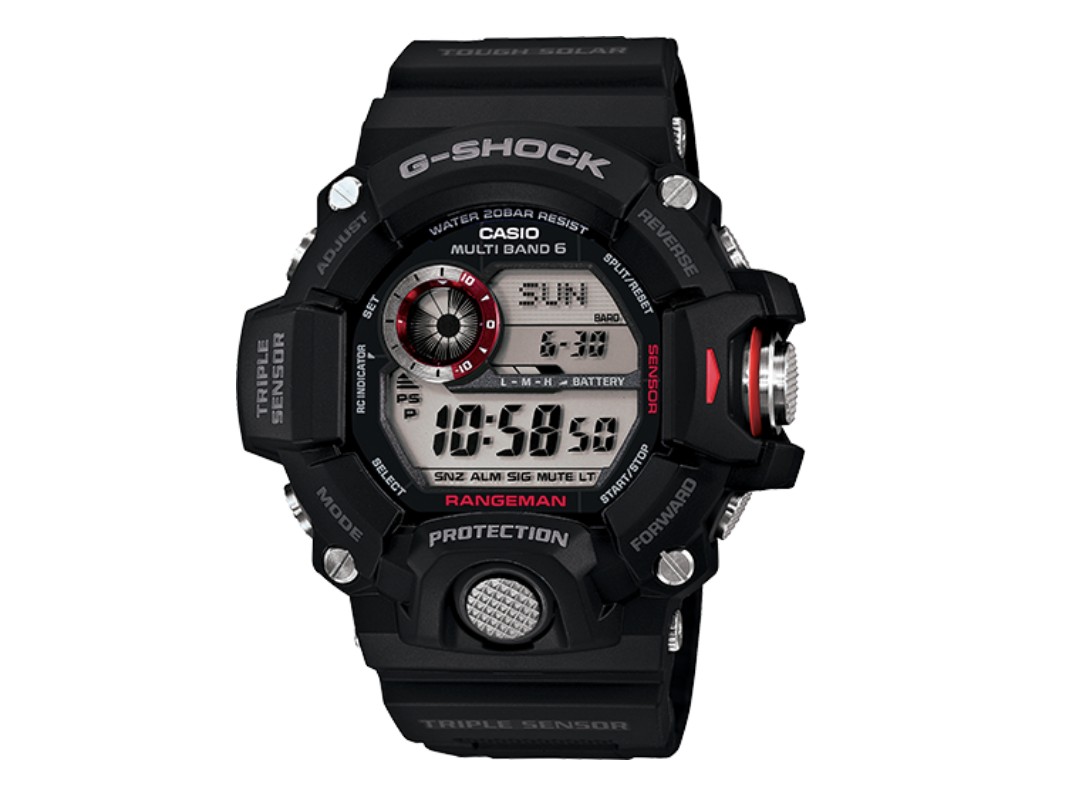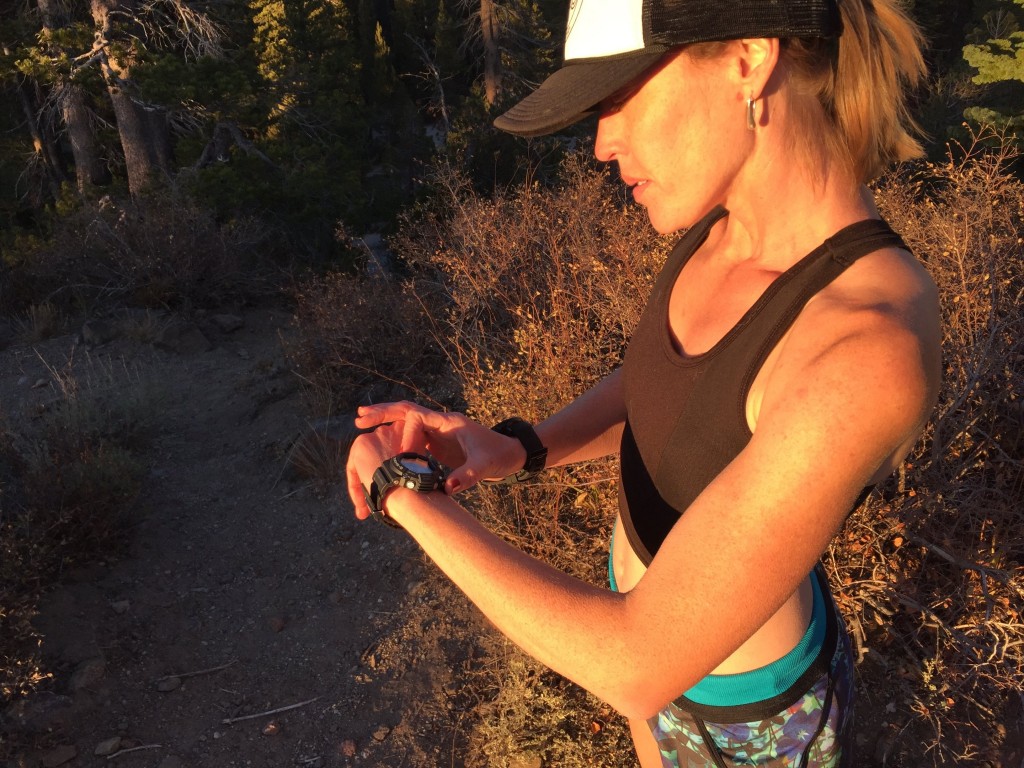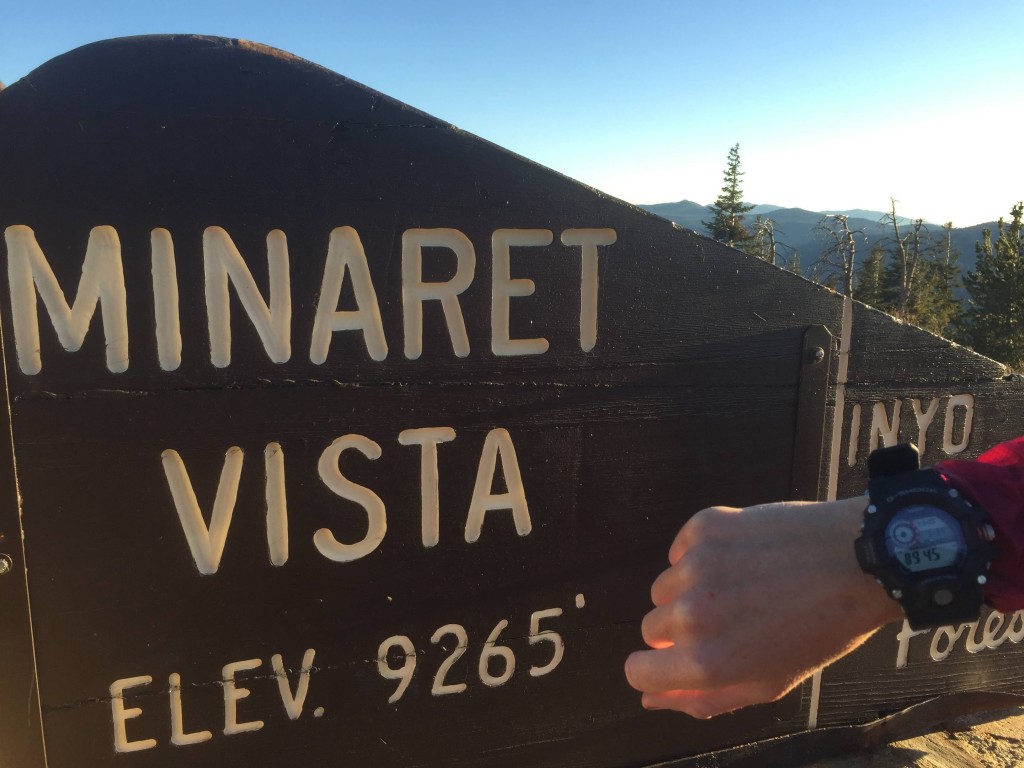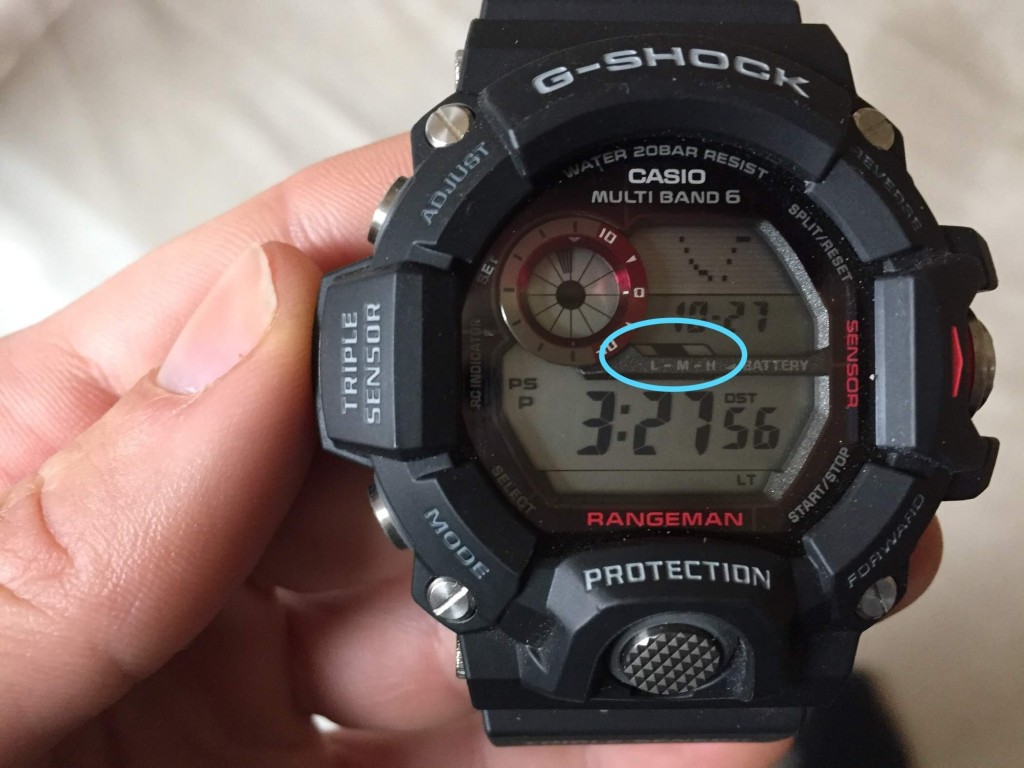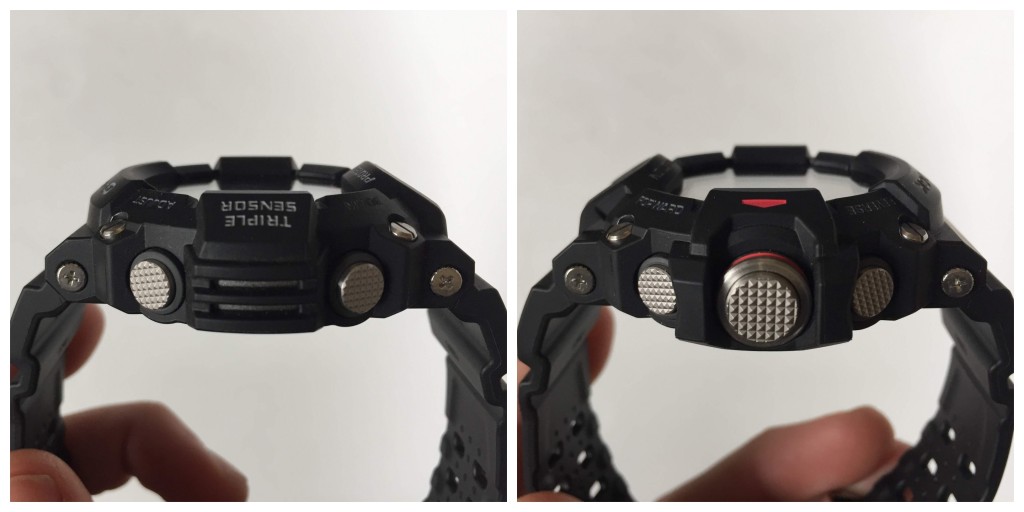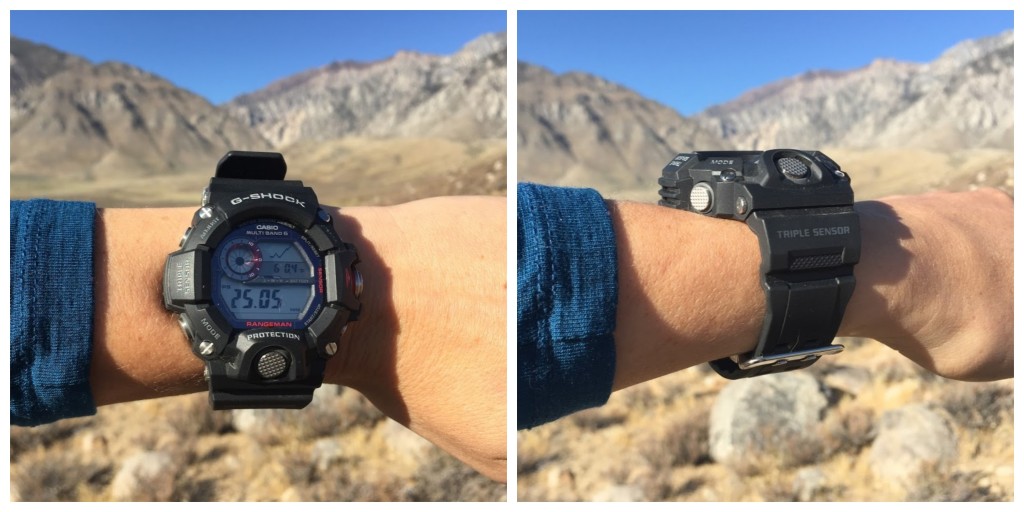Casio GW9400-1 Review
Our Verdict
Our Analysis and Test Results
This watch is a winner when it comes to battery life and has some good basic features, but it's uncomfortable and visually overwhelming.
Performance Comparison
Altimeter Accuracy
This watch takes altitude readings based on barometric pressure, which works because generally air pressure decreases as you go higher. However, the drawback of this method is that barometric pressure can change with weather, meaning that if a storm rolls in, your altimeter may give you an inaccurate reading. The user manual even recommends calibrating your altimeter based on a known elevation as frequently as possible to help account for this.
We found that the altimeter was decently accurate- not great, not terrible. When calibrated at a trailhead right before a hike, it would do pretty well. One evening after being calibrated in Bishop before driving up to Mammoth, its reading was 320' off compared to an elevation sign, which seemed like a significant amount for an hour after calibration.
Battery Life
Battery life is where the Casio watches excel. Relying on a long-lasting rechargeable solar battery means that if you're embarking on a multi-month long trek, you'll never need to worry about access to electricity in order to keep this watch working. Its specs claim it can go as long as 7 months before needing any exposure to sunlight to charge it, and while we weren't able to spend a winter in the Arctic to verify this, we believe it. Throughout testing, which involved both weeks of use as well as weeks in a desk drawer, it stayed at the medium or high battery levels. You won't ever need to go out of your way to charge this watch, since general exposure to sunlight while on your wrist should be enough to keep it fully functioning.
User Experience
In spite of its fairly conservative number of features, this is one watch that you'll definitely need to sit down and read the manual for. Similar to the Suunto Core and Ambit models, it has five buttons (not including a separate backlight button), but we found the GW9400 much more complicated to learn. Each button has multiple labels and functions that can be hard to distinguish because of how they're etched into the black casing. Even setting the time and location required a deep dive into the user manual. The watch face packs a lot into a fairly small screen, and we didn't like how cluttered it felt.
The backlight was bright enough, but it only stayed on for one second at a time with no option to hold it in and keep it on, which could prove frustrating if trying to change or view a setting during the night. Frustration was the general mood when using this watch- a lot of the actual functionality is just more complicated than it needs to be.
Fit
Watches don't get bulkier than this one. It's a behemoth on your arm, and for our small-wristed reviewers, it was impossible to get a comfortable fit. Measuring the watch face down the length of your arm, the diameter is 52 mm, but measuring the face from one side of your arm to the other, the diameter is 65 mm. This is due to the straps being inflexible where they join the main watch body, so on a smaller arm, there's a lot of extra space where it can't be tightened down.
The screen itself is 30 mm in diameter, with the part of the screen that's actually showing data measuring closer to 25 mm. This feels a bit disappointing when you consider how much real estate the watch is taking up on your arm. The buttons were responsive, and we didn't have any issues using them with gloves on, but it'd be hard to fit this watch under close-fitting layers.
Features
Although it has the features you expect in a basic ABC watch, it felt like learning to use them was more complicated than necessary.
Altimeter and Barometer
The altimeter and barometer use a sensor on the left side of the watch, with the altimeter measuring a range of -2,300' to 32,800'. The barometer screen also shows the temperature and a barometric pressure graph of the previous 42 hours from the automatic readings the watch takes every two hours.
Compass
Compass readings are accessed using the same sensor button that gives you altimeter and barometer readings. It can be calibrated, and we found its accuracy on par with the other ABC watches tested. The manual recommends bringing a compass to double-check readings in high-consequence situations.
Timekeeper
Heavy backcountry sleeper? Good news- you can set five daily alarms on this model so that you never miss your predawn wake-up call! (This can be a surprisingly rare feature in altimeter watches.) Other than that, the basic timekeeping features include a stopwatch, timer, world clock, and sunrise/sunset data for your programmed location.
Value
The number of customers looking for this specific watch is bound to be small. There are multiple other watches at the same price point that offer either more features, better style, or both. If all you're needing is a basic altimeter watch, and you still want the look and durability of a Casio, we recommend the Casio SGW-300H for about one-fifth the price of this model.
Conclusion
The Casio GW9400 is a basic ABC watch with a steep learning curve. Its battery life is impressive, its aesthetics are not, and unless you're going on the longest and most rugged adventures, it's probably not the watch you're looking for.


